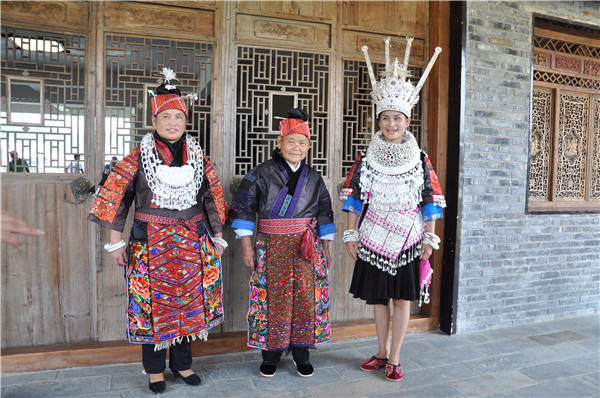Traditional Li textile techniques


Miao women display their traditional costumes and silver ornaments in eastern Guizhou province. [Liu Xiangrui/China Daily]
The traditional Li textile techniques of spinning, dyeing, weaving and embroidering are forms of traditional Chinese craftsmanship and were one of the first national intangible cultural heritages.
The techniques are used by women of the Li ethnic group of Hainan province, China, to make cotton, hemp and other fibers into clothing and other daily necessities.
The techniques involve warp ikat (a dyeing technique), double-face embroidery, and single-face jacquard weaving, and are passed down from mothers to daughters through personal demonstration.
The Li textile patterns are designed using the Li women's imagination and knowledge of traditional styles.
Though lacking characters or words of any language, the patterns are still a carrier of the history and legends of Li culture including worship, taboos and beliefs.
The textiles also play indispensable roles in important social and cultural occasions such as religious rituals and festivals, and in particular in weddings when Li women design their own dresses.







